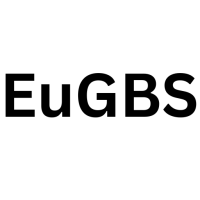Summary
Cut through the green tape
We don't push agendas. At Net Zero Compare, we cut through the hype and fear to deliver the straightforward facts you need for making informed decisions on green products and services. Whether motivated by compliance, customer demands, or a real passion for the environment, you’re welcome here. We provide reliable information—why you seek it is not our concern.
Details
Deep dive
Background
The European Green Bond Standard (EuGBS) is a landmark regulatory framework established to enhance transparency, credibility, and comparability in the green bond market. Formally adopted under Regulation (EU) 2023/2631 and applicable from 21 December 2024, the EuGBS builds on the EU Taxonomy Regulation and aligns with the broader objectives of the European Green Deal and the Sustainable Finance Disclosure Regulation (SFDR). The standard is overseen by the European Securities and Markets Authority (ESMA), which supervises external reviewers, while national competent authorities (e.g., Ireland’s Central Bank or the Dutch AFM) monitor issuer compliance. The EuGBS replaces fragmented voluntary market practices, such as the International Capital Market Association’s Green Bond Principles, with a unified EU-wide framework. By requiring alignment with the EU Taxonomy, the EuGBS ensures that proceeds fund activities contributing to climate neutrality, reinforcing Europe’s commitment to directing capital toward sustainable investments.
Reporting Requirements
The EuGBS imposes rigorous reporting requirements to prevent greenwashing and ensure accountability. As detailed in the EuGBS regulation, issuers must submit:
A pre-issuance factsheet, reviewed by an external auditor, detailing how proceeds will align with the EU Taxonomy and projected environmental impacts.
Annual allocation reports until full allocation, disclosing how funds are deployed, including portfolio approaches if applicable.
An impact report post-allocation, quantifying the environmental outcomes of funded projects, using standardized metrics and methodologies.
All reports must be published on the issuer’s website and reviewed by ESMA-registered external reviewers, with transitional flexibility until June 2026. Sovereign issuers are exempt from prospectus requirements but must still comply with disclosure rules. Reporting requirements under the EuGBS may differ slightly between member states. For instance, the Netherlands’ financial regulator (AFM) mandates that issuers provide detailed and precise disclosures on sustainability claims, especially those related to net-zero targets, along with comprehensive reporting of Scope 1, 2, and 3 emissions.
Affected entities
The EuGBS applies to all issuers marketing bonds as "European Green Bonds", including corporations, governments, and supranational entities. While voluntary, the standard is expected to attract issuers seeking credibility; in 2023, green bonds comprised 6.8% of total EU bond issuances (€197.3 billion), with corporations dominating at 76%. The Dutch AFM notes heightened scrutiny for sustainability-linked bonds, suggesting broader indirect effects. Exact numbers of annual reporters are unspecified, but the framework’s design anticipates wide adoption, particularly by EU institutions and Taxonomy-aligned firms. Non-EU issuers may also opt in, provided they adhere to the same standards.
Enforcement and Penalties for Noncompliance
Noncompliance triggers escalating penalties. National authorities may suspend prospectus approvals, withdraw the EuGB label, or ban issuers from the market for up to a year. Fines can reach 0.5% of an issuer’s annual turnover, with member states permitted to impose criminal sanctions. ESMA may penalize external reviewers with fines up to €200,000 for methodological failures or conflicts of interest. The Dutch implementation adds public naming-and-shaming measures, requiring non-compliant issuers to disclose violations on their websites. These measures underscore the EU’s commitment to enforcing transparency in sustainable finance. By integrating stringent reporting with robust oversight, the EuGBS aims to become the global benchmark for green bonds, accelerating Europe’s transition to a low-carbon economy.


